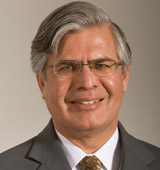least 50% and
maybe even more. The BOP
proposition is adamant that we
should not reduce quality in this
process of lowering price. This is
unrealistic. Most often, the only way
to reduce price is to lower quality.
Contrary to the BOP proposition, the
Interview 4
poor do like inexpensive, low-quality
products! This is not because they
cannot appreciate or do not want
good quality. They simply cannot
afford the same quality products as
the rich; so, they have a different
price-quality trade-off. Selling
inexpensive, low-quality products
does not hurt the poor (as long as they
understand any tradeoffs related to
safety). Insisting on not lowering the
quality actually hurts the poor by
depriving them of a product they
could afford and would like to buy.
MNCs have a difficult time really
understanding how poor are the
people at the BOP, and the pricequality
trade-off the poor are willing
to make.
What would be the unintended
consequences for MNCs in serving
the BOP markets? Is there any
empirical evidence that throws light
on either positive or negative impact
on a company's greater good?
The unintended consequence of the
BOP proposition is exploitation of the
poor. The BOP initiative could result
in the poor spending money on
products such as televisions,
shampoo and skin whitening creams
that would have been better spent on
higher priority needs such as
nutrition and education and health.
The poor are vulnerable by virtue of
lack of education (often they are
illiterate), lack of information, and
economic, cultural and social
deprivations. The data suggest that
the poor lack self-control, yield to
temptation, and spend to keep up
with their neighbors. In this they are
no different than people with more
money, but the consequences of bad
choices are more severe for the poor.
For example, the poor spend
surprisingly a large fraction of their
meager income on alcohol and
tobacco.
What are the risks and challenges
of serving the BOP markets,
especially for the MNCs? What
precautions, if any, should be taken?
The MNCs should listen more to the
voice of the poor, social activists and
the government to better understand
the perspective and the needs of the
poor, and ensure that the products
they sell to the BOP serve the real
interests of the poor
The critical success factors in
serving the BOP markets are, inter
alia, Awareness, Availability,
Affordability and Acceptability.
How should MNCs go about
achieving success in each of these
four As?
The biggest challenge is ‘affordability'.
We need to increase the real
affordability of products by reducing
the price per use. Putting products in
small packages does not do that—it
does improve convenience and cash
flow management, but not the real
affordability. By the BOP logic, an
easy way to solve the problems of
hunger and malnutrition would be to
sell food in smaller packages thus
making it more affordable to the poor!
One of the often quoted criticism
against MNCs is that in their urge to
reach out to the BOP customers, they
end up increasing their poverty by
putting them through another spiral
(surplus funds/purchasing power,
selling them more goods to improve
standard of living, desire to buy
more goods, increased borrowing
inclination)
exploiting the poor. The poor could
end up consuming too much and
saving too little for the future, and
even worse getting into a debt spiral.
The poor could also end up
consuming inappropriate products:
low priority products (such as
shampoo) instead of higher priority
products (such as nutritious food),
and harmful products (such as
tobacco and excessive alcohol).
Is there any dichotomy between
Social Entrepreneurship/ Microfinance
initiatives and BOP
philosophy? While the former's
objective is to increase their
purchasing power by organizing
businesses around their
communities, BOP seems to take
away that purchasing power?
That is right. We should emphasize
increasing the income of the poor
rather than selling to the poor—that is
the best way to alleviate poverty.
